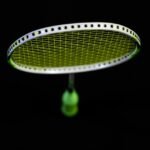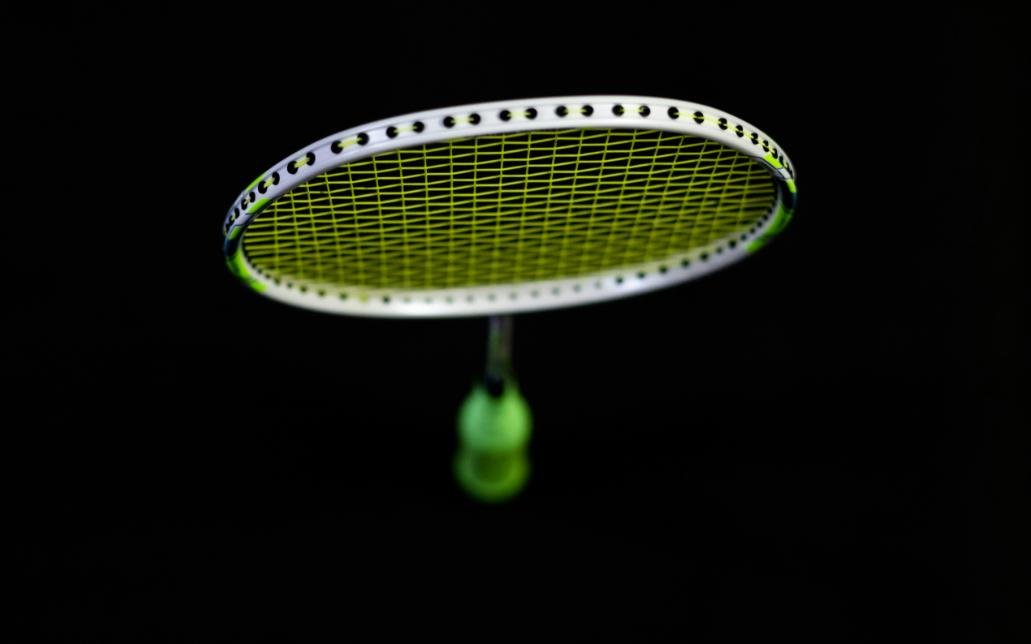Understanding Your Playing Style
Before making a decision on the purchase of a new badminton racket, it is crucial for intermediate players to thoroughly assess their playing style. Recognizing whether one is more inclined towards an attacking or defensive strategy plays a vital role in selecting the appropriate equipment. This assessment begins with an examination of stroke preferences, which can reveal insights into an individual’s natural inclinations on the court.
For those who prefer aggressive play, characterized by quick movements and powerful shots, a racket that offers greater stiffness and a head-heavy balance may enhance performance. This setup generally allows for more acceleration in smashes and a stronger attack, catering to players who thrive on offensive strategies. On the other hand, individuals who lean towards a defensive style will find more benefit in a racket with a lighter frame and even balance. Such rackets can provide the necessary control and maneuverability, crucial for returning shots and engaging in longer rallies.
Footwork also merits attention when determining one’s playing style. Players who exhibit swift footwork and maintain a forward momentum are likely to be aggressive players seeking to dominate each rally. In contrast, those who prefer strategic positioning and calculated movements may identify as defensive players. Recognizing how footwork complements stroke preferences will further clarify the ideal racket specifications.
Finally, it is essential to consider overall game approach. An aggressive player often anticipates and seeks to finish points quickly, while a defensive player may focus on maintaining rallies and wearing down opponents. By understanding these factors—stroke preferences, footwork, and overall approach—intermediate players can make informed choices when selecting the best badminton racket to enhance their performance on the court.
Consider the Racket Specifications
When choosing a badminton racket, intermediate players must carefully evaluate several key specifications, as these can significantly influence performance and comfort during play. The primary features to consider include the racket’s weight, balance point, string tension, and grip size. Each of these specifications plays a crucial role in determining how a racket feels and performs on the court.
The weight of the racket is typically categorized into different grades, with lighter rackets generally weighing between 75-80 grams, while heavier models can go beyond 85 grams. A lighter racket offers better maneuverability, allowing for quicker swings and enhanced reaction times, which can be beneficial during fast-paced games. Conversely, a heavier racket tends to provide more power on shots due to its greater mass, although it may sacrifice some agility.
The balance point, which refers to the distribution of weight in the racket, is another important factor. Rackets can be classified as head-heavy, head-light, or evenly balanced. Head-heavy rackets are often preferred by players looking for powerful smashes, as the additional weight at the top aids in generating momentum. In contrast, head-light rackets offer improved handling and control, making them suitable for net play and quick exchanges. An evenly balanced racket provides a combination of both power and control, catering to various playing styles.
String tension is also paramount, as it directly affects the racket’s performance. Higher string tension can enhance control and precision, while lower tension may result in increased power and a more forgiving feel on impact. Intermediate players must experiment with different tensions to find their ideal balance between control and power.
Finally, the grip size of the racket is crucial for ensuring comfortable handling. A grip that is too small can lead to excessive wrist movement and potential injuries, while a grip that is too large may hinder proper racket control. By assessing these specifications thoughtfully, intermediate players can select a badminton racket tailored to their specific needs and playing style.
Material Matters: Choosing the Right Frame
When it comes to selecting a badminton racket, the frame material plays a crucial role in determining performance and longevity. The three most common materials used in cricket racket frames include graphite, aluminum, and other composite materials. Each of these options presents distinct advantages and disadvantages which can significantly impact an intermediate player’s game.
Graphite is the preferred choice for many serious players, including intermediates looking to enhance their game. This lightweight material offers excellent stiffness, which translates into increased power and control during play. Additionally, graphite frames tend to have better shock absorption properties, making them ideal for players who experience fatigue or discomfort in their arms or wrists. However, the major downside to graphite rackets is their susceptibility to damage. Care must be taken to avoid clashes with other players’ rackets or hard surfaces, as these can lead to cracks and a reduction in performance.
On the other hand, aluminum rackets provide a more durable option, ideal for players who frequently play in non-competitive settings or enjoy recreational play. These rackets are usually heavier than their graphite counterparts, which may lead to decreased maneuverability and speed. However, their affordability and resistance to damage make them a popular choice for beginners or casual players. Intermediate players aiming for performance may find aluminum frames fall short in delivering the speed and precision needed for competitive play.
Beyond these two common materials, various composite options exist that blend qualities of both graphite and aluminum. These materials often provide improved durability while maintaining a lighter weight, catering to intermediate players who seek a balanced approach to both performance and resilience. Ultimately, the decision on frame material should align with your playing style and commitment to improving your badminton skills.
String Types and Tension Levels
When selecting a badminton racket, the choice of strings plays a crucial role in determining performance on the court. There are primarily three types of strings used in badminton: natural gut, synthetic gut, and multifilament strings. Natural gut strings offer excellent elasticity and feel, making them a popular choice among advanced players for their superior power and control. However, they can be expensive and susceptible to moisture. Synthetic gut strings, on the other hand, provide a good blend of affordability and performance, making them suitable for intermediate players. These strings tend to be durable and resist wear and tear but may not offer the same level of feel as natural gut. Lastly, multifilament strings consist of numerous fibers bundled together, providing enhanced comfort and power while still being less harsh on the arm.
The tension of the strings is another vital aspect that influences how a racket performs. Generally, higher tension results in better control and precision, which can be beneficial for players who prefer a more refined style of play. However, this increased control comes at the cost of power, as tightly strung rackets can feel harder on impact. Conversely, lower tension provides a greater trampoline effect, making it easier to generate power. This setup is particularly advantageous for beginner and recreational players who are still developing their technique. Determining the right string tension depends on an individual’s skill level and playing style; intermediate players may find a balance where they can control shots effectively while still benefitting from power.
When choosing strings and tension levels, players should consider their unique style, strengths, and weaknesses. Experimenting with different types of strings and adjusting tension can significantly enhance gameplay. Ultimately, understanding how these elements interact with a player’s technique is essential for improving overall performance on the badminton court.
The Importance of Grip Size
Choosing the right grip size for your badminton racket is a crucial aspect of optimizing your performance on the court. Grip size significantly influences comfort, control, and overall playability. When the grip is too small, it can lead to slippage during vigorous play, resulting in a loss of control over the racket. Conversely, a grip that is too large may cause hand fatigue, reducing your ability to maintain a strong hold throughout the match.
To determine the correct grip size, players can utilize a simple measurement method. An effective way to assess this is to hold the racket as if preparing to play and check the space between the tip of your fingers and your palm. Ideally, there should be a gap of about a finger’s width, which signifies that the grip is neither too tight nor overly spacious. Most manufacturers provide a sizing chart, allowing players to use their measurements as a guide for selecting the appropriate grip size. Misjudging this parameter can lead to discomfort and diminished performance, which is why it is especially important for intermediate players to pay attention to their grip size choices.
Another vital aspect to consider is how grip materials influence feel and performance. For example, a racket with a cushion grip can absorb shock more effectively, thus enhancing comfort during long matches. This is particularly beneficial for intermediate players who are developing their skills and may be subjected to longer periods of play. Ultimately, choosing a suitable grip size and material will ensure a more enjoyable playing experience, reduce the risk of injury, and allow for better strategic execution during games. In conclusion, taking the time to select the proper grip size is essential for any player looking to enhance their badminton performance.
Setting a Budget: Value vs. Performance
When it comes to purchasing a badminton racket, players must navigate the often complex relationship between value and performance. Establishing a budget is crucial, as it helps to streamline the options available and ensures that players do not overspend while still striving for an effective tool that enhances their game. The first step in setting a budget is to define what one can realistically afford without compromising other important expenses.
The next tier involves assessing the performance needs based on playing style and skill level. Intermediate players often require rackets that offer a blend of power and control, and this is where understanding the available price ranges becomes insightful. Badminton rackets typically fall into categories defined by their price—lower-end, mid-range, and premium—which each present varying levels of performance and technology. Players should reflect on what aspects of performance are non-negotiable; for instance, are lightweight materials preferred for agility, or is a heavy frame chosen for power? Understanding these needs can directly correlate with how much to budget.
Value is not solely determined by the initial purchase cost; players must also consider the longevity of the racket and how it meets their evolving skill set over time. Mid-range rackets often strike an excellent balance between cost and quality, featuring durable materials and technology that support player improvement. Furthermore, evaluating warranty programs or customer support associated with specific brands can add to the understanding of value versus cost.
Potential buyers should also explore user reviews and professional endorsements as a means of gauging how well a racket performs in real-world scenarios. By prioritizing both performance needs and budget constraints, players can identify the best badminton racket that offers not only initial value but also supports long-term growth in their game.
Trial and Error: The Importance of Testing Rackets
Choosing the perfect badminton racket is a highly personalized journey, and one of the most effective ways to make an informed decision is through trial and error. By testing different rackets, players can gain crucial insights into which specifications accommodate their playing style and comfort levels. This approach not only enhances the overall experience but also aids in avoiding potential pitfalls associated with purchasing a racket that may not suit an individual’s unique needs.
One of the recommended strategies for testing rackets is to borrow from friends or fellow players. This informal method allows intermediate players to explore various racket types without incurring costs, offering a hands-on experience in actual game scenarios. Asking peers for their insights about the racket’s performance can also provide valuable information about weight distribution, grip size, and balance—all of which contribute to the overall feel of the racket during play.
Visiting sports stores that offer demo rackets is another excellent option. Many retailers provide a selection of rackets for potential buyers to try before committing. During these trials, players should pay attention to several key aspects. Firstly, consider the weight of the racket; a racket that is too heavy may cause fatigue, while one that is too light may lead to a lack of power. Secondly, the grip size should feel comfortable and secure; players must ensure they can maintain control during intense rallies. Finally, evaluating the racket’s balance—whether it feels head-heavy, even, or head-light—will significantly impact playing style and effectiveness on the court.
Ultimately, there is no one-size-fits-all solution when selecting a badminton racket. Through careful testing and consideration of personal preferences, players can find the ideal racket that enhances their performance and enjoyment of the game.
Expert Recommendations: Brands and Models to Consider
When selecting a badminton racket, particularly for intermediate players, it is essential to consider reputed brands that are known for their quality and performance. Several brands stand out in the market, offering a range of models that cater specifically to the needs of players who have honed their skills but seek to elevate their game further. These brands include Yonex, Li-Ning, Victor, and Babolat.
Yonex remains a market leader in the badminton equipment industry. The Yonex Nanoflare 700 is a popular choice among intermediate players due to its lightweight design and excellent maneuverability. Its unique technology enhances the speed and control of shots, making it suitable for both singles and doubles play. The Yonex Astrox series, particularly the Astrox 77, is also notable for its powerful smashes, which is favored by aggressive players.
Another commendable brand is Li-Ning, which has gained recognition for its innovative designs. The Li-Ning N90 III is celebrated for its balanced weight and versatility, allowing players to excel in various playstyles. This model is built with advanced carbon fiber tech, providing excellent durability and enhanced power. The Airstream series is also worth considering, as it promotes quick swings and precision.
For those drawn to Victor, the Thruster K 9900 is an excellent intermediate option noted for its rapid response and stability during play. This racket features a unique frame design that enhances its aerodynamics, making it easier to switch between defensive and offensive strokes. Additionally, Babolat’s Satelite Gravity series offers a blend of lightness and power, catering well to players looking to improve their overall game.
With these expert recommendations, intermediate players can strategically choose from these respected brands and models, finding the ideal badminton racket tailored to their developing skills and specific playing style.
Maintaining Your Racket for Longevity
Proper maintenance of your badminton racket is essential to ensure its longevity and optimal performance. A well-cared-for racket can significantly enhance your playing experience and contribute to improved performance on the court. One of the first aspects to consider is string care. Badminton strings can be susceptible to wear and tear, which can affect your shot precision and control. It is advisable to inspect your strings regularly for any frays or signs of damage. Players who frequently play may benefit from re-stringing their rackets every few months, as fresh strings can maintain the shuttlecock’s speed and accuracy.
In addition, consider using a string dampener to reduce vibrations during play. This accessory minimizes the risk of string breakage and adds a layer of comfort to your game. The storage conditions of your racket also play a vital role in its longevity. Always store your racket in a cool, dry place, away from direct sunlight. Extreme temperatures can weaken both the frame and strings of the racket, leading to potential damage over time. A protective cover can provide an extra layer of safeguarding, ensuring your racket is shielded from dust and accidental impacts when not in use.
Handling practices are another crucial element in maintaining your racket’s integrity. Avoid hitting the ground or using your racket to strike hard surfaces, as this can lead to frame deformation or damage. When transporting your racket, use a dedicated bag that provides cushioning to minimize the risk of impact-related injuries. Being gentle with your equipment will contribute significantly to its lifespan. By incorporating these care tips into your routine, you can enjoy the full potential of your badminton racket, ensuring that you are always ready for your next match.






